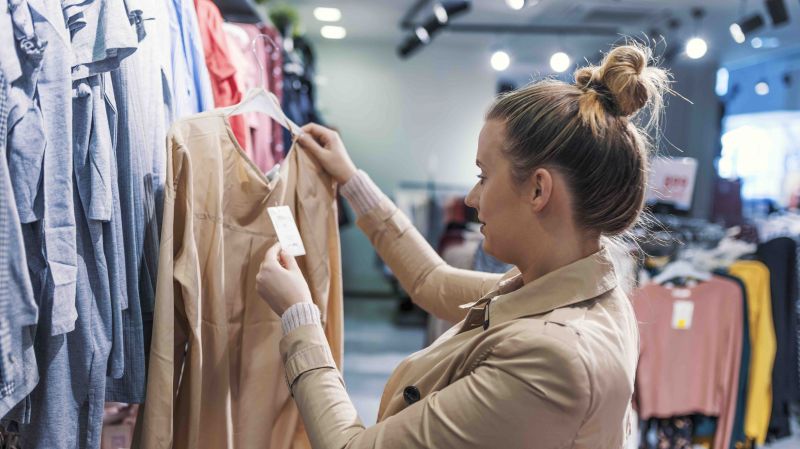Ping! Click! How One Mega-Mall Finds Its Big Data Edge
Toronto’s Yorkdale Shopping Centre mines a bonanza of visitor information for retail gold

- Major malls in North America are able to harvest data from shoppers’ smartphones and interactive kiosks to increase shopper dwell time, optimize store layout, and address other retail challenges.
- Data scientists can now tell which groups of stores are visited in one trip, in which order, and where the shopper last stops before leaving the mall.
- Graduate students at Smith School of Business gleaned traffic patterns from the data to build powerful analytics models, including a model to predict when a shopper is about to leave a mall.
Ecommerce and power centres have turned many once-thriving malls into zombie zones. In the U.S., an estimated one-quarter of all malls are expected to shut down by 2022. In Canada, small and medium-sized malls are experiencing similar struggles.
The bigger malls that continue to thrive are those that have the analytics firepower to gather and leverage visitor data. They’re doing so not only to protect what they have but to identify new sources of revenue. According to a report by McKinsey & Co., malls that make tenant and layout decisions based on shopper data see lease revenues increase by “double-digit percentages.”
It used to be that mall managers would station personnel with click counters at key points to record traffic or survey random shoppers to collect demographic information. Today at mega-malls such as Toronto’s Yorkdale Shopping Centre, they can harvest data from shoppers’ own smartphones and interactive kiosks.
Instead of a survey of 600 people, for example, data scientists with Yorkdale’s owner, Oxford Properties, can create a map that includes the journeys of 400,000 customers. With some 1.4 million demographic and data points, Yorkdale has a deep pool from which to search for actionable insights.
Data Scoop
It’s an impressively efficient data-mining process. About 65 percent of Yorkdale shoppers have a device that can be pinged by a sensor such as Wi-Fi, whether or not the shoppers sign into the free Wi-Fi at the mall. Since there are a couple of sensors in each store, the pings can be mapped to locations and over time.
Those who log into the mall’s Wi-Fi — about seven to eight percent of shoppers — contribute even more when they accept the conditions of a privacy statement and allow demographic information via their social media profile to be shared.
“It’s probably not 100 percent perfect,” says Stephen Thomas, director of the Smith School of Business’s Master of Management Analytics and Queen’s Master of Management in Artificial Intelligence programs. “Probably fewer grandmas are signing into Wi-Fi with their Facebook account. But since 70 percent of the shoppers are within the 18 to 30 demographic, it’s close enough for what Oxford wants.”
Analytics and AI at Smith
Thomas knows first-hand the value of the Yorkdale data. Thanks to an alumnus now at Oxford Properties, Thomas has access to Yorkdale’s dataset to use in Smith’s analytics and AI graduate programs. So far, 18 student teams have crunched the data from this one Oxford mall, looking for clues to retail issues such as how to increase shopper “dwell time” or optimize store layout.
Some of his students, for example, used the traffic patterns to create analytics that predict when a shopper is about to leave the mall. They achieved 98 percent accuracy. Mall managers hope that one day, the data can be used by an app to send a shopper a targeted ad when they sense impending departure, and keep that shopper inside the mall a bit longer.
Monthly sales reports have long been a staple of mall management data. And it’s always been possible to gauge the general demographics of shoppers. But with the traffic patterns mapped to dwell times, Thomas says, analysts can now tell which groups of stores are visited in one trip, in which order, and where a shopper last stops before leaving the mall.
Analytics show that men stick to the perimeter while women are much more likely to make a beeline for the guts of the mall
It might not be a surprise to learn, for example, that the Disney Store is the exit store for many shoppers. “If someone goes to the Disney Store,” Thomas says, “that’s almost always the last store they go to.” Perhaps that retailer is visited last as a reward for a child’s patience throughout the rest of the mall.
But you may not expect a restaurant to be the typical next stop after the lingerie store where you’ve just come face-to-mirror with body issues. Nor might you expect that men visit high-end makeup stores after patronizing the fancy men’s clothing store, or that men stick to the perimeter while women are much more likely to make a beeline for the guts of the mall. You can thank the data for these insights.
It’s not just Oxford Properties that is tracking shoppers in such detail. Cadillac Fairview reported using the same ping-plus-video-analysis tracking methods. Mall owners believe they can assuage privacy concerns by anonymizing and encrypting the data and persuading shoppers that they will be treated to a customized experience in exchange for their information. Given the stakes involved, they have a lot riding on these assumptions.
— Adrienne Montgomerie